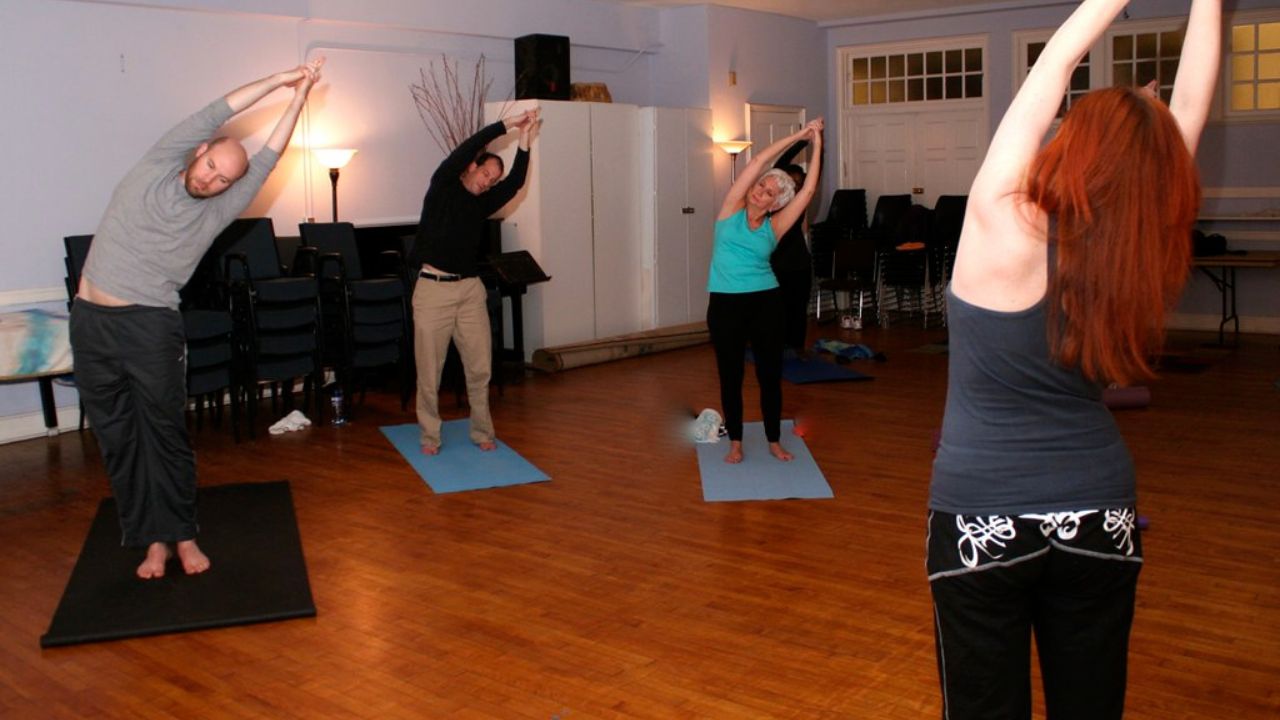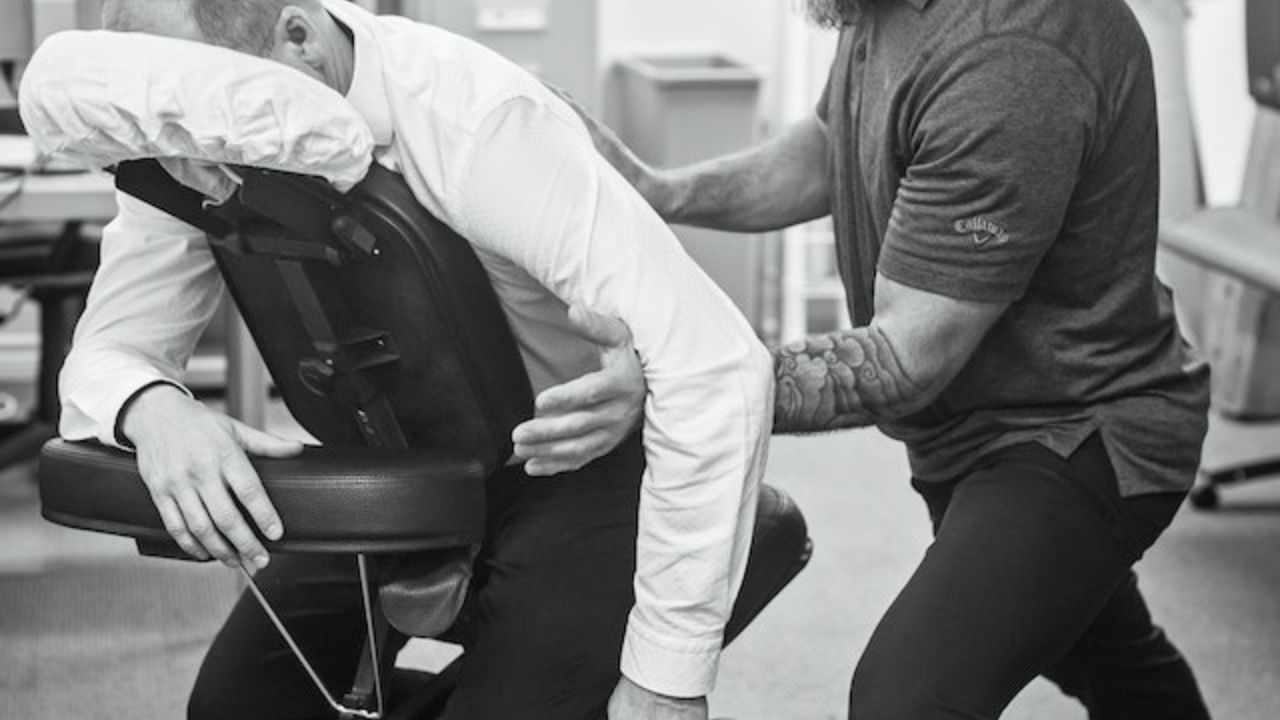
Back pain is a common ailment that affects individuals of all ages and lifestyles. In this informative article, we will explore 12 must-try exercises for alleviating back pain.
From yoga poses and pilates exercises to cardio workouts and stretching routines, we will provide evidence-based recommendations to help strengthen your back, improve spinal alignment, and release tension.
Whether you are a fitness enthusiast or simply seeking relief, these exercises offer a holistic approach to managing back pain.
Yoga Poses for Back Pain Relief
The article explores the various yoga poses that can be utilized for back pain relief. Yoga, an ancient practice originating from India, offers a holistic approach to managing back pain by combining physical postures, breathing techniques, and meditation.
One of the key benefits of practicing yoga is its ability to reduce stress, which is often a contributing factor to back pain. Certain yoga poses, such as Child's Pose, Cat-Cow, and Downward Dog, can help stretch and strengthen the muscles in the back, promoting flexibility and alleviating pain.
Additionally, meditation techniques incorporated in yoga practice can help manage back pain by promoting relaxation, reducing muscle tension, and improving overall well-being.
Pilates Exercises to Strengthen Your Back
One effective way to strengthen your back is by incorporating Pilates exercises into your fitness routine. Pilates is a low-impact form of exercise that focuses on core strength, flexibility, and postural alignment. It can be particularly beneficial for individuals experiencing back pain, as it targets the muscles that support the spine and promote proper alignment.

There are several Pilates exercises that can help relieve back pain and strengthen the back muscles. The Pilates bridge exercise, for example, targets the glutes, hamstrings, and lower back muscles. The cat-camel exercise helps to improve spinal flexibility and mobility. The swimming exercise engages the upper and lower back muscles, as well as the glutes and hamstrings.
When performing Pilates exercises for back pain relief, it is important to maintain proper form and alignment to avoid further injury. It is also recommended to start with gentle movements and gradually increase intensity as your back strengthens. Always consult with a qualified instructor or healthcare professional before starting any new exercise program, especially if you have a history of back pain or injury.
Cardio Workouts for a Healthy Spine
Cardiovascular exercises, such as running, cycling, and swimming, can greatly contribute to maintaining a healthy spine. Engaging in regular cardio workouts not only improves cardiovascular health but also strengthens the muscles that support the spine, reducing the risk of back pain and injury.
Low impact aerobics, such as brisk walking or using an elliptical machine, are particularly beneficial for those with existing back issues or who prefer exercises with less impact on the joints. Treadmill workouts can also be an excellent option as they allow for controlled speed and incline adjustments to tailor the exercise intensity to individual needs.
It is important to maintain proper form during cardio exercises, keeping the spine aligned and avoiding excessive stress or strain. Always consult with a healthcare professional before starting any new exercise program, especially if you have a history of back pain or injury.
Stretching Routines for Back Pain Alleviation
When it comes to alleviating back pain, incorporating stretching routines can be highly beneficial. Optimal stretching techniques can help improve flexibility and mobility, which in turn can reduce muscle tension and alleviate discomfort.
Targeted muscle group stretches, such as those focusing on the lower back or hips, can specifically address areas of pain or tightness, providing relief and promoting overall spinal health.

Optimal Stretching Techniques
To effectively alleviate back pain, incorporating optimal stretching techniques into your routine is essential. Before engaging in any stretching routine, it is important to perform optimal warm-up exercises. This helps to increase blood flow, warm up the muscles, and prepare the body for the stretching exercises to come. Some recommended warm-up exercises include light cardio activities such as walking or cycling, as well as dynamic stretches that target the major muscle groups in the body.
One effective technique for relieving back pain is the use of foam rolling. Foam rolling is a self-myofascial release technique that helps to release tension and tightness in the muscles. By using a foam roller, you can target specific areas of the back, such as the upper back or the lower back, and apply pressure to release any knots or trigger points.
Incorporating these optimal warm-up exercises and foam rolling techniques into your stretching routine can help to alleviate back pain and improve overall flexibility. Remember to consult with a healthcare professional or a qualified instructor to ensure proper form and technique.
Targeted Muscle Group Stretches
One effective way to alleviate back pain is through targeted muscle group stretches, which help to improve flexibility and relieve tension in specific areas of the back.
Targeted muscle group stretching focuses on stretching and strengthening specific muscles that are commonly associated with back pain. By targeting these muscles, individuals can improve their posture, increase their range of motion, and reduce the risk of future injuries.
Foam rolling techniques can also be incorporated into targeted muscle group stretching routines to further alleviate back pain. Foam rolling involves using a foam roller to apply pressure to specific muscles, helping to release tightness and knots. This technique can increase blood flow to the muscles, reduce muscle soreness, and improve overall mobility.
Incorporating targeted muscle group stretching and foam rolling techniques into a regular exercise routine can provide significant relief from back pain and contribute to better overall back health.

Core Strengthening Exercises for a Stronger Back
Implementing targeted exercises that focus on strengthening the core muscles can greatly contribute to achieving a stronger back and reducing the risk of back pain. The core muscles, including the deep abdominal muscles, pelvic floor muscles, and back muscles, play a crucial role in providing stability and support to the spine. Optimal posture and proper alignment of the spine can be achieved through core strengthening exercises.
One of the most effective core exercises is the plank. This exercise engages multiple muscle groups, including the abdominals, back muscles, and glutes. By holding the plank position, the core muscles are activated and strengthened, leading to improved stability and reduced strain on the back.
Other core strengthening exercises that can help alleviate back pain include bridges, bird dogs, and Russian twists. These exercises target the deep muscles of the core and promote strength and stability in the back.
Incorporating these exercises into a regular fitness routine can lead to a stronger back, improved posture, and reduced risk of back pain. It is important to consult with a healthcare professional or a certified trainer to ensure proper form and technique when performing these exercises.
Resistance Training for Improved Back Health
Engaging in resistance training exercises, such as weightlifting or using resistance bands, can effectively improve back health and alleviate back pain.
Resistance band exercises are a popular choice for those looking to strengthen their back muscles. These bands provide resistance throughout the movement, targeting the muscles responsible for supporting the spine. They are versatile and can be used for various exercises, such as rows, lat pulldowns, and chest presses.
Weightlifting is another effective form of resistance training that can benefit back health. By incorporating exercises like deadlifts, squats, and overhead presses, individuals can strengthen the muscles in their back, promoting stability and reducing the risk of injury. It is important to start with lighter weights and gradually increase the load to prevent strain or injury.

Resistance training, whether with bands or weights, can be a valuable addition to a back care routine, improving overall back health and reducing pain.
Low-Impact Exercises to Reduce Back Discomfort
Incorporating low-impact exercises into your routine can effectively reduce back discomfort and promote overall spinal health. When it comes to managing back pain, it is essential to choose exercises that are gentle on the body while still providing maximum benefits.
One such exercise method that has gained popularity for back pain prevention is yoga therapy. Yoga combines gentle movements, stretching, and deep breathing techniques to improve flexibility, strengthen the core muscles, and alleviate tension in the back.
The practice of yoga therapy focuses on the individual's specific needs and aims to address the root causes of back pain. By incorporating yoga therapy into your routine, you can experience relief from back discomfort and improve your overall spinal health.
Swimming Techniques for Back Pain Management
Swimming techniques can be an effective method for managing back pain. Proper stroke technique is crucial to ensure that the back is supported and not strained during swimming.
The benefits of buoyancy and water resistance can also help alleviate back discomfort by reducing the impact on the spine and providing gentle resistance for strengthening the muscles.
Proper Stroke Technique
One effective approach to managing back pain through swimming involves implementing specific stroke techniques. Proper stroke technique is crucial for maximizing swimming benefits while minimizing the risk of injury or exacerbating back pain.

When it comes to back pain management, swimming offers a low-impact, full-body workout that can help strengthen muscles, improve flexibility, and promote overall well-being. To ensure the best results, it is important to focus on maintaining proper body alignment, engaging the core muscles, and using efficient stroke techniques.
For example, in freestyle or front crawl, a balanced body position with a long, streamlined body and a relaxed neck and shoulders can alleviate strain on the back. Additionally, incorporating bilateral breathing and a rhythmic arm and leg movement can further enhance the benefits of swimming for back pain management.
Benefits of Buoyancy
With the added benefit of buoyancy, swimming techniques can effectively alleviate back pain and provide relief for individuals seeking alternative methods of pain management.
Water therapy, also known as hydrotherapy, offers numerous benefits for those with back pain. The buoyancy of water reduces the pressure on the spine, allowing for increased range of motion and decreased pain. The water provides a gentle resistance, which helps to strengthen and tone the muscles without putting excessive strain on the back.
Swimming also promotes improved circulation and flexibility, further aiding in the relief of back pain. Additionally, the low-impact nature of swimming makes it suitable for individuals of all fitness levels.
Incorporating swimming techniques into a back pain management routine can have significant positive effects and contribute to overall well-being.
Water Resistance Advantages
By harnessing the benefits of water resistance, individuals can effectively utilize swimming techniques as an advantageous method for managing back pain.

Aquatic therapy, also known as hydrotherapy, offers a range of benefits for individuals suffering from back pain. The buoyancy of water reduces the stress on the spine, allowing for greater freedom of movement without putting excessive strain on the back.
The resistance of the water also provides a gentle and supportive environment for strengthening the muscles that support the spine. Additionally, the hydrostatic pressure of the water can help reduce inflammation and promote circulation, further aiding in pain relief.
Swimming techniques such as water aerobics, water jogging, and specific back exercises in the pool can all contribute to improved back health and pain management.
Incorporating aquatic therapy into a comprehensive rehabilitation program can be a valuable tool for individuals seeking freedom from back pain.
Balance and Stability Exercises for a Pain-Free Back
During regular workout sessions, including balance and stability exercises can help individuals achieve a pain-free back. Balance training and core stability exercises are essential components of a well-rounded fitness routine, especially when it comes to alleviating back pain.
These exercises focus on improving the body's ability to maintain equilibrium, which in turn reduces strain on the back muscles and promotes proper posture. By engaging the core muscles, which include the abdominal, back, and pelvic muscles, balance and stability exercises help to support the spine and prevent unnecessary stress on the back.
Incorporating exercises such as single-leg balance, plank variations, and stability ball exercises can enhance proprioception, strengthen the muscles that support the spine, and ultimately lead to a pain-free back.

Flexibility Exercises to Release Tension in Your Back
Flexibility exercises play a crucial role in releasing tension in the back and promoting overall spinal health.
Yoga, with its emphasis on stretching and elongating the muscles, can improve flexibility and relieve tightness in the back.
Pilates back stretches, which focus on core strength and alignment, can also help alleviate back pain.
In addition, incorporating cardio exercises into your routine can improve blood flow and promote flexibility in the back muscles.
Yoga for Back Flexibility
One of the key benefits of yoga for back flexibility is its ability to release tension in the back muscles. Yoga poses for beginners can be gentle yet effective in improving flexibility and reducing back pain.
The practice of yoga involves stretching and strengthening the muscles, which helps to alleviate tightness and improve range of motion in the back. In addition to physical benefits, yoga also offers stress relief, which can indirectly contribute to the release of tension in the back.
By incorporating deep breathing and mindfulness techniques, yoga helps to calm the mind and relax the body, further supporting the release of tension and promoting overall well-being.

Regular practice of yoga for back flexibility can lead to increased mobility, reduced pain, and a greater sense of freedom in the body.
Pilates Back Stretches
With a focus on improving flexibility and releasing tension in the back, Pilates offers a variety of effective back stretches. These stretches can help alleviate back pain and promote a healthy spine.
Here are some Pilates back stretches that you can try:
Spine Stretch Forward: Sit tall with your legs extended in front of you. Inhale to prepare, and as you exhale, reach forward, lengthening your spine and folding over your legs.
Swan: Lie on your stomach with your hands underneath your shoulders. Inhale to prepare, and as you exhale, lift your chest off the mat, keeping your neck long and engaging your back muscles.
Cat-Cow: Start on all fours with your hands under your shoulders and your knees under your hips. Inhale as you arch your back, lifting your chest and tailbone. Exhale as you round your spine, tucking your chin and tailbone.
These Pilates back stretches can be a great addition to your routine, along with yoga poses for back pain relief, to help release tension and improve flexibility in your back.

Cardio Exercises for Back
The incorporation of cardio exercises into your fitness routine can be beneficial for releasing tension and improving flexibility in your back. While it is important to choose back-friendly cardio options, there are several exercises that can help strengthen your back and promote overall back health.
High intensity interval training (HIIT) is one such option that can be effective in achieving these goals. HIIT involves alternating periods of intense exercise with short recovery periods. This type of training not only improves cardiovascular fitness but also helps to build strength and flexibility in the back muscles.
Additionally, low-impact cardio exercises such as swimming and cycling can also be excellent choices for individuals looking to improve back flexibility without putting excessive strain on the spine.
Postural Correction Exercises for Better Spinal Alignment
Significantly, incorporating postural correction exercises into your routine can greatly improve spinal alignment and alleviate back pain. Here are some postural alignment techniques and ergonomic tips that can help you achieve better spinal alignment:
Engage in exercises that focus on strengthening your core muscles, such as planks and bridges. A strong core can support your spine and promote better posture.
Practice stretching exercises that target tight muscles, such as the chest, hips, and hamstrings. Tight muscles can pull your spine out of alignment, leading to back pain.
Be mindful of your sitting posture. Sit up straight, with your back supported and feet flat on the floor. Avoid slouching or crossing your legs, as these can strain your spine.

Use ergonomic equipment, such as an adjustable chair and a supportive mattress. These can provide proper support and alignment for your spine.
Mind-Body Practices for Holistic Back Pain Relief
Yoga and meditation are effective mind-body practices that can provide holistic relief for back pain. Research has shown that incorporating these practices into your daily routine can help alleviate pain, reduce stress, and improve overall well-being.
Yoga, with its gentle stretches and poses, can help increase flexibility, strengthen the core muscles, and improve posture, all of which are crucial for maintaining a healthy spine.
Meditation, on the other hand, can help relax the mind and promote a sense of calm, which can in turn reduce muscle tension and alleviate pain.
Additionally, chiropractic care, when combined with yoga and meditation, can provide holistic healing for back pain. Chiropractic adjustments can help align the spine, improve joint mobility, and alleviate pressure on the nerves, leading to improved function and reduced pain.
Frequently Asked Questions
What Are Some Common Causes of Back Pain?
Some common causes of back pain include poor posture, muscle strain, herniated discs, and spinal stenosis. Prevention measures such as maintaining a healthy weight, practicing good posture, and engaging in regular exercise can help reduce the risk of developing back pain.
Can These Exercises Help With Chronic Back Pain?
Yoga and Pilates are both effective in alleviating chronic back pain, with each offering unique benefits. Incorporating cardio exercises can also be beneficial for back pain relief. Consult with a professional for personalized guidance.

Are There Any Exercises That Should Be Avoided if You Have Back Pain?
When dealing with back pain, it is important to avoid exercises that may exacerbate the condition. Certain exercises, such as heavy weightlifting or high-impact activities, should be avoided. Instead, focus on gentle stretches and exercises that promote lower back pain relief.
How Often Should These Exercises Be Done for Optimal Results?
For optimal results in alleviating back pain, it is recommended to perform these exercises with a frequency of at least 3-5 times per week. Each session should last about 30-60 minutes, gradually increasing intensity and duration as tolerated.
Are There Any Modifications or Variations of These Exercises for Different Fitness Levels or Body Types?
Modifications for beginners and variations for advanced practitioners are available for exercises aimed at alleviating back pain. These adaptations cater to different fitness levels and body types, allowing individuals to safely and effectively engage in physical activity.
 Mobility trainingHome Fitness RecoverySports Injury PreventionPersonal Physical TherapyOrthopedic SolutionsPrivacy PolicyTerms And Conditions
Mobility trainingHome Fitness RecoverySports Injury PreventionPersonal Physical TherapyOrthopedic SolutionsPrivacy PolicyTerms And Conditions
